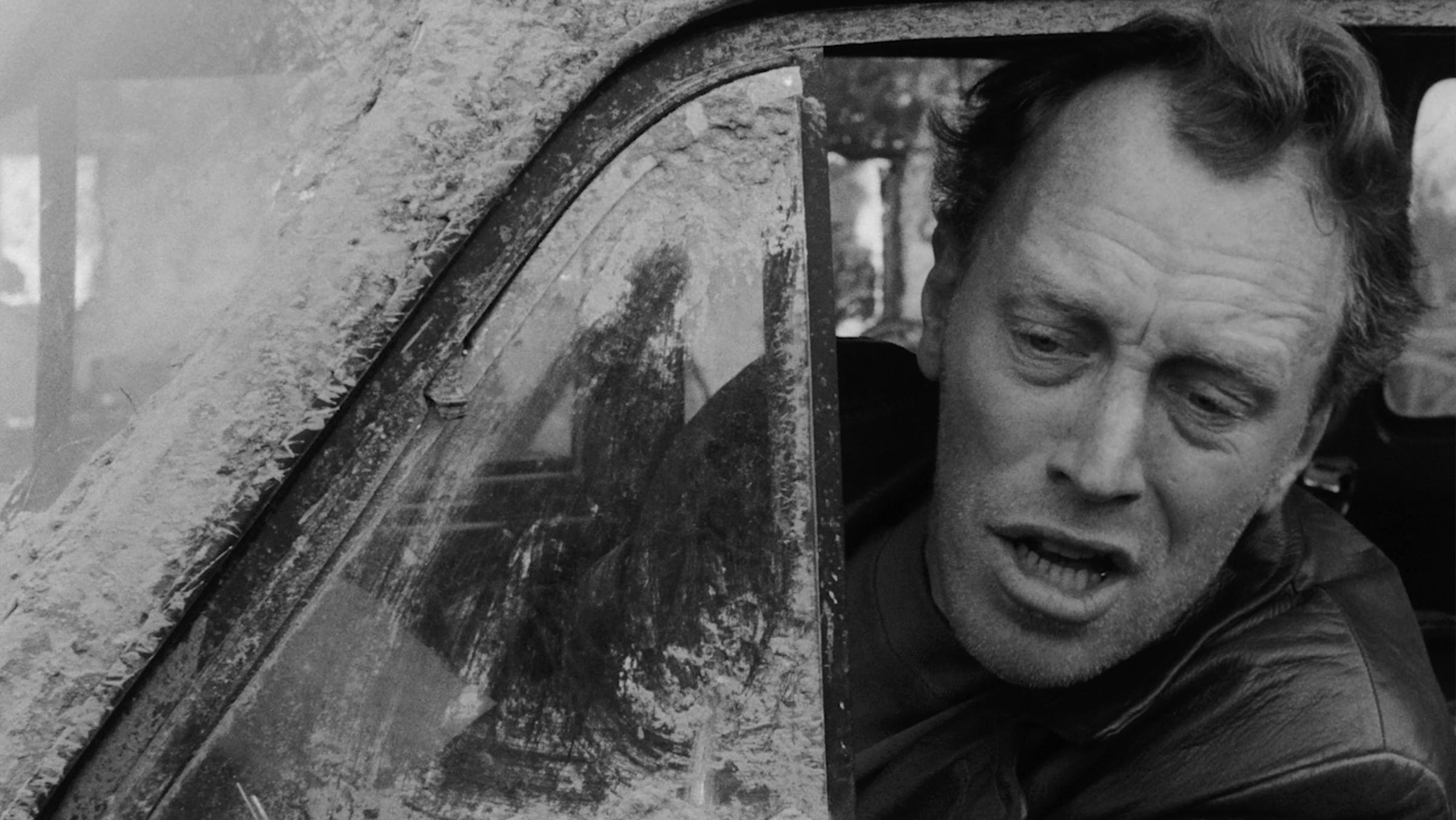RELATED ARTICLE
Shame: Twilight of the Humans

Share
Shame (1968) is one of the great neglected films from Ingmar Bergman’s midcareer creative explosion. It builds on and surpasses the two Bergman films that immediately preceded it: the avant-garde milestone Persona (1966) and the surreal shocker Hour of the Wolf (1968). These three films and The Passion of Anna, which followed them in 1969, all explore physical and psychological violence, collapsing and mutating personalities, and the gorgeous and menacing austerity of the Swedish coast. (Though the other three were shot on the director’s beloved Fårö island, for Hour of the Wolf he went to Hovs Hallar.) Hour of the Wolf, Shame, and The Passion of Anna also form an unofficial trilogy about couples under duress, all played by Bergman’s longtime collaborator Max von Sydow and the director’s muse at the time, Liv Ullmann. Bergman and Ullmann, who had become both colleagues and lovers during the making of Persona, lived together on Fårö throughout this productive period, though they would decide to split up while filming The Passion of Anna.
In Shame, a powerfully realistic vision of an imagined civil war, the filmmaker’s collaboration with his actors turns even more confident and fluid, and his celebrated enigmatic close-ups become unselfconscious and limpid—emotionally transparent. As the sixties neared their end, even Bergman, the screen’s foremost investigator of private life, intimate behavior, and postreligious faith, felt the need to make a statement on that turbulent decade and the legacy of World War II. His vision of how sadism and paranoia fuel martial conflicts and spread from society’s fringes into middle-class living rooms (and bedrooms) permeates Shame, the only Bergman film that could be called primarily political or antiwar. The relentless, Kafkaesque backdrop of a never-ending war puts a troubled marriage into stark relief, dramatizing the end of fellow feeling and the dehumanization of death. It reflects the social and political upheaval of its time in ways that are still joltingly pertinent fifty years later.
Bergman’s impulse to create the film was clear and concrete. As he told the editors of the Swedish film journal Chaplin, it originated in a question: “What sort of a situation is needed to turn us from good social democrats into active Nazis?” He latched on to documentary images of an aging Vietnamese couple—an old woman hanging on to their “half-starved cow” as it gallops away from a U.S. military helicopter, her husband fighting back tears as he sees her and the animal disappear in a cloud of dust. Then he fused these inspirations.
In Shame, Bergman scrapes the polite liberal veneer off postwar European life and puts Scandinavian islanders in the position of a colonized people. The film takes place in the near future (the early seventies). Eva and Jan Rosenberg (Ullmann and von Sydow), former classical violinists, have moved to a remote island to escape the civil war ravaging their unnamed country. They eke out a living selling produce they grow on their small farm. The white opening credits unspool on a black screen as machine guns and artillery fire punctuate polyglot scraps of newsreels and broadcasts. This audio mélange is the opposite of white noise. It signals that the war is closing in on Jan and Eva, their existential dodge catching up with them. We feel their alienation in our bones. The movie picks up with the couple shortly before shock troops surge in from the sea. Eva is already losing patience with Jan’s pettiness and escapist nostalgia.
“As empathetic as it is immersive, Shame opens up our senses and emotions even when it depicts atrocities.”


“With ghastly beauty, Bergman transforms the stuff of breaking news into a secular Armageddon.”







